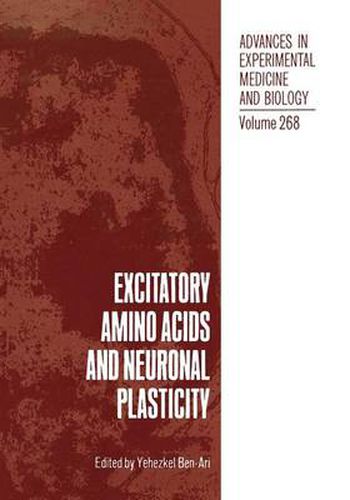Readings Newsletter
Become a Readings Member to make your shopping experience even easier.
Sign in or sign up for free!
You’re not far away from qualifying for FREE standard shipping within Australia
You’ve qualified for FREE standard shipping within Australia
The cart is loading…






This title is printed to order. This book may have been self-published. If so, we cannot guarantee the quality of the content. In the main most books will have gone through the editing process however some may not. We therefore suggest that you be aware of this before ordering this book. If in doubt check either the author or publisher’s details as we are unable to accept any returns unless they are faulty. Please contact us if you have any questions.
Adult and immature nervous system are capable of considerable plasticity and unravelling the underlying mechanisms is one of the principal and most fascinating goals of Neurobiology. A major contribution to our understanding of neural plasticity has come from recent studies in excitato- ry amino acids - which are thought to mediate a large part of the excitatory synaptic transmission on the brain. Important steps in this explosive field are: 1) the synthesis of relatively specific antagonists of the N-methyl-D aspartate (NMDA) and non-NMDA receptors subtypes, 2) the characterization of the unique features of the NMDA receptor channel complex notably its voltage dependent Mg++ blockade, its permeability to calcium and its allosteric modulation by glycine, 3) the demonstration that by virtue of their Ca++ permeability NMDA receptors are involved in many -but not all -synapses in the initiation but not the maintennce of long term potentiation (L TP) an experimented model of learning and memory processes. More recent studies also indicate tha excitatory amino acids also play an important role in developmental plasticity in vivo; in cell cultures low levels of excitatory amino acids have trophic roles and can inhibit or promote neurite growth. Excitatory amino acids also play an important role also in other forms of neural plasticity such as the use dependent permanent changes in neural circuit produced by brief seizures (epileptogenesis) as well as the reactive sprouting and neosynapse formation which take place in epilepsy models and after deafferentiation or lesions.
$9.00 standard shipping within Australia
FREE standard shipping within Australia for orders over $100.00
Express & International shipping calculated at checkout
This title is printed to order. This book may have been self-published. If so, we cannot guarantee the quality of the content. In the main most books will have gone through the editing process however some may not. We therefore suggest that you be aware of this before ordering this book. If in doubt check either the author or publisher’s details as we are unable to accept any returns unless they are faulty. Please contact us if you have any questions.
Adult and immature nervous system are capable of considerable plasticity and unravelling the underlying mechanisms is one of the principal and most fascinating goals of Neurobiology. A major contribution to our understanding of neural plasticity has come from recent studies in excitato- ry amino acids - which are thought to mediate a large part of the excitatory synaptic transmission on the brain. Important steps in this explosive field are: 1) the synthesis of relatively specific antagonists of the N-methyl-D aspartate (NMDA) and non-NMDA receptors subtypes, 2) the characterization of the unique features of the NMDA receptor channel complex notably its voltage dependent Mg++ blockade, its permeability to calcium and its allosteric modulation by glycine, 3) the demonstration that by virtue of their Ca++ permeability NMDA receptors are involved in many -but not all -synapses in the initiation but not the maintennce of long term potentiation (L TP) an experimented model of learning and memory processes. More recent studies also indicate tha excitatory amino acids also play an important role in developmental plasticity in vivo; in cell cultures low levels of excitatory amino acids have trophic roles and can inhibit or promote neurite growth. Excitatory amino acids also play an important role also in other forms of neural plasticity such as the use dependent permanent changes in neural circuit produced by brief seizures (epileptogenesis) as well as the reactive sprouting and neosynapse formation which take place in epilepsy models and after deafferentiation or lesions.